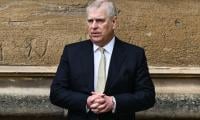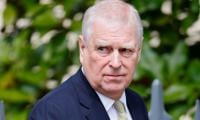LAHORE : The middle class has been increasingly ‘squeezed’ in Pakistan in the recent years due to relatively higher inflation in housing rents and unprecedented hike in domestic tariffs of electricity and gas.
Since 2013–2014, rents cumulatively have increased by 44 percent, as compared to an overall rise in the consumer price index of 38 percent. Simultaneously, the power tariff rose by over 60 percent, while gas tariff jumped up by as much as 167 percent.
According to a recent report of the UNDP on Pakistan National Human Development Report titled, “The three Ps of inequality: Power, People, and Policy,” in 2007–2008, 42 percent of Pakistan’s population was middle class which declined to 36 percent by 2018–2019, implying that the middle class is increasingly being ‘squeezed.’
Today, Pakistan’s middle class is in dire straits. Like much of the rest of the population, a large proportion of middle class households is finding it difficult to make both ends meet. As COVID-19 prompted large-scale layoffs and salary cuts, it is becoming increasingly hard for the middle class to sustain themselves.
Despite the pressure of inflation, unemployment, and decreasing purchasing power parity, the middle class do not fall into the category of those eligible for social protection or most forms of social assistance, unlike the poorest income group. As their means become more limited, the middle class is largely on its own while it have been pushed to the bottom of pyramid over time.
Majority of the studies on inequities always focused the richest and poorest income groups whereas the middle class is always overlooked. Since the middle class has sometimes been characterised as a group whose per capita expenditure is in the range of 25 percent more or less than (plus or minus) the median per capita expenditure. Thus, the experiences of the middle class to gauge the inequalities are important.
There are several reasons for studying developments in the size and living standards of the middle class. A large and expanding middle class is a key sign of a rapidly growing economy. The middle class also plays an effective role in promoting social and political change. Moreover, it can act as a force to counter the elite capture of state resources. The middle class has frequently been considered the population group which runs the economy.
According to the report, in the Musharraf era, the middle class’ real per capita income grew at a relatively high rate, at almost 5 percent per annum. Thereafter, the growth rate has been far lower, falling to just 1.2 percent between 2013–2014 and 2018–2019. The principal reason for this decline in the buoyancy of middle class income is the rising unemployment rate of educated workers, who form a key part of the middle class. While in 2007–08 the unemployment rate for workers with a degree or postgraduate qualifications was below 5 percent while it rose to over 16 percent by 2018–19.
In recent years, employment opportunities for middle class workers in the formal sector – including in large-scale manufacturing, banking and finance, electricity and gas, and public administration – grew far more modestly than in the informal sector.
The most persuasive evidence of this squeeze is the considerable decline in the middle class’ savings rates. In 2001–02, these were close to 3 percent, before rising to over 7 percent in 2007–08. After 2008, their savings rates fell sharply, back to below 3 percent.
The regional distribution of the middle class is concentrated in Pakistan’s two largest provinces and in the country’s urban areas. Almost 80 percent of Pakistan’s middle-class lives in Punjab and Sindh, while urban centres are home to nearly 48 percent of middle-class households.















